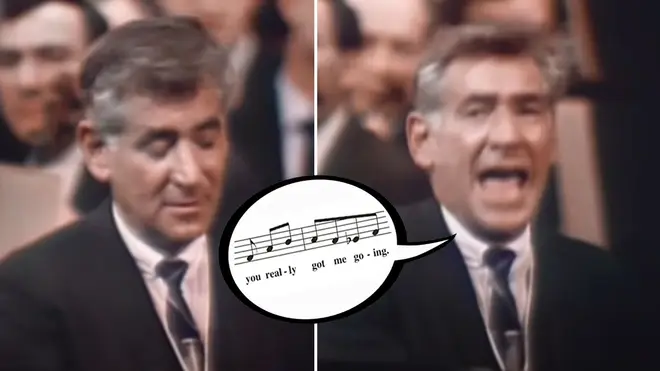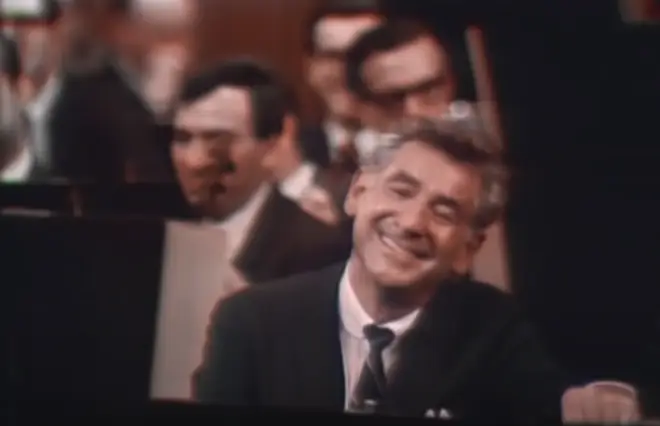On Air Now
Relaxing Evenings with Zeb Soanes 7pm - 10pm
27 May 2021, 14:45 | Updated: 27 May 2021, 16:56

The time US conductor Leonard Bernstein captured a young audience’s imagination by explaining the mixolydian mode through the immortal genius of two ‘60s rock bands.
“That’s all mixolydian!” Leonard Bernstein cried, at one of his Young People’s Concerts with the New York Philharmonic which are, to date, the world’s longest-running series of family concerts of classical music.
The great musical educator and West Side Story composer used one of his episodes to explain a particularly beguiling musical mode, in which the seventh tone of the scale is lowered by half a tone.
“Despite its tongue-twisting name, it’s one of the most appealing and popular modes of all,” Bernstein says of the mixolydian. “Like its neighbour the lydian, it’s a major mode. And also like the lydian, it has one peculiar note in it.”
(Read all about music’s wonderful modes here)
Demonstrating his theory lesson in music, he plays a Cuban riff not dissimilar to the one heard in his West Side Story Overture.
“Most of the jazz and Afro-Cuban music and rock n’ roll tunes we hear owe their very existence to this old mixolydian mode,” Bernstein explains.
Read more: Star mezzo pleads with Leonard Bernstein over breakneck tempo

Young People's Concert: "What is a Mode?" / Bernstein · New York Philharmonic
Bernstein always understood how to engage with a young audience. “Do you remember a really terrific song, a barbaric number of a few years ago sung by a group known as the Kinks?” he asks the crowd. “It’s called ‘You Really Got Me’.”
A few enthused murmurs bubble through the audience. And that’s how the conductor of the New York Philharmonic came to sing a ‘60s rock band onstage at New York’s Lincoln Center.
Singing the main riff from the rock song, Bernstein cries, “That’s all mixolydian!”
Still at the piano, Bernstein continues: “Or I wonder if you know that absolutely charming Beatles tune called ‘Norwegian Wood’?”
Playing Lennon and McCartney’s elegant opening guitar melody, Bernstein says: “You hear that lowered seventh? That’s what gives it its charm, and that’s what makes it mixolydian.
“They are all mixolydian.”
Read more: Leonard Bernstein conducts an orchestra with just his eyebrows

But, the conductor prefaces, “I don’t want to give you the idea that this mode produces only jazz and pop music. It’s still to be heard as much in churches as in discotheques.
“And in fact, our old friend Debussy, when he wanted to suggest a cathedral rising out of the sea, used this same mode.”
Moving into classical territory now, Bernstein plays a segment from Debussy’s The Sunken Cathedral (La Cathédrale Engloutie).
“Isn’t that a wonderfully impressive sound?” he says (watch here).
The musical maestro ends the lesson on modes by conducting the New York Philharmonic in a piece from his first ballet Fancy Free – a Cuban-sounding ‘danzón’ that uses our old friend, the Mixolydian.

Marin Alsop on her musical hero, Leonard Bernstein
Leonard Bernstein’s Young People’s Concerts ran for 14 years and are still considered his greatest achievement.
They explored modern masters like Copland and Holst, to the more nitty-gritty aspects of music theory, and introduced many young people to the joys of classical music for the first time.
Introducing the concert, which was all scripted by Bernstein himself, TV host John Lithgow says: “Whether he’s conducting Debussy or his own Fancy Free, you sense that for him, these pieces aren’t sacred things to be worshipped, but living creatures to be loved and understood.”